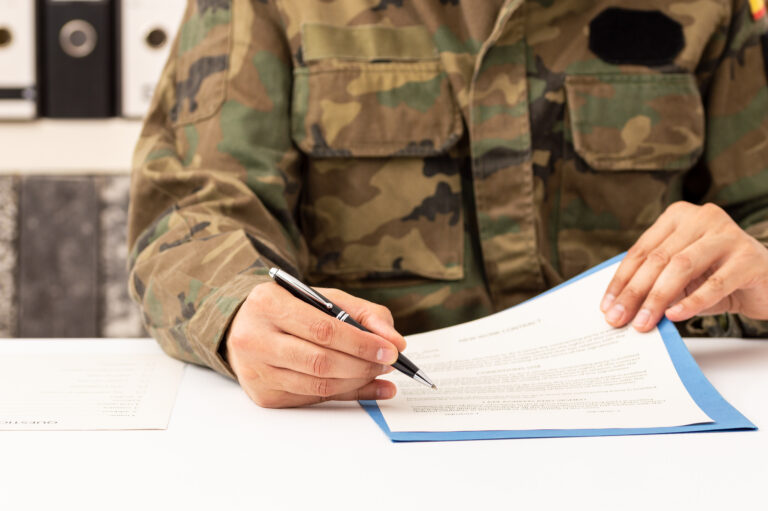Benefits of Using a DoD CAC Card
The Department of Defense Common Access Card, commonly known as the DoD CAC card, is a smart card used as the standard identification for active duty military personnel, Selected Reserve, DoD civilian employees, and eligible contractor personnel. This card offers numerous benefits, ranging from secure authentication to enhancing operational efficiency.
Secure Authentication
A major benefit of the DoD CAC card is its use in secure authentication. The card contains embedded integrated circuits, which use encryption to protect personal data. This helps to securely verify the identity of the cardholder, ensuring that only authorized personnel can access DoD systems and installations. This high level of security helps to protect sensitive information from unauthorized access and cyber threats.
Multi-Factor Authentication (MFA)
The CAC card is a critical component in the DoD’s multi-factor authentication (MFA) protocol. MFA requires users to authenticate using at least two different methods: something they know (like a PIN) and something they have (like the CAC card). This dual verification system significantly reduces the risk of unauthorized access, making it far more difficult for adversaries to breach defense systems.
Access to DoD Networks
The CAC card is essential for accessing DoD networks. Users must insert their card into a reader and enter their personal identification number (PIN) to gain network access. This process not only ensures the identity of the user but also logs their activity. Access capabilities go beyond mere network entry, allowing personnel to perform secure email communication and access classified documents. This level of control maintains the integrity of critical operations.
Digital Signature Capability
Digital signatures are another significant benefit provided by the CAC card. These signatures use cryptographic algorithms to ensure that the documents signed are authentic and have not been altered. This feature is particularly important in environments where the integrity of documents is crucial, such as in contracts and official communication. Digital signatures replace physical ones, expediting processes without compromising security.
Physical Access to Facilities
The CAC card also serves as a physical access card for many DoD facilities. On presenting the card at security checkpoints, personnel can gain entry to controlled areas. This dual function as both an ID and an access key, reduces the need for multiple cards, simplifying daily operations for military and civilian personnel alike. The system increases the security of physical spaces by ensuring that only vetted personnel can enter sensitive areas.
Medical and Dental Records
Service members can use the CAC card to access their medical and dental records. This access helps in providing better medical care by ensuring that healthcare providers have timely access to accurate medical history. The card consolidates critical information, making it easier for service members to keep track of their health status and appointments.
Ease of Deployment and Mobility
The CAC card is designed to be versatile and durable, making it suitable for use in various environments. Whether personnel are deployed in remote locations or working in secure facilities, the card’s robust design ensures it remains functional. This flexibility supports the highly mobile nature of military operations, providing reliable access wherever it is required.
Standardization Across DoD
The CAC card standardizes identification and access controls across all Department of Defense entities. This standardization simplifies policy enforcement and ensures uniformity in security protocols. Consistent use of the CAC card across various branches and departments promotes interoperability and coordination, enhancing overall national defense efforts.
Streamlined Issuance and Management
The process of issuing and managing CAC cards has been streamlined to maximize efficiency. Centralized management ensures that cards can be quickly and securely distributed, with clear procedures in place for handling lost or compromised cards. This streamlined approach minimizes administrative burdens while maintaining high security standards.
Integration with Military Systems
The CAC card integrates seamlessly with various military systems, such as online training platforms, logistical databases, and personnel management systems. This integration allows for cohesive interaction between different functions and services, reducing the time and effort required to carry out various tasks. The card supports a broad range of operations, making it easier for personnel to navigate their duties.
Enhanced Operational Security
Operational security is a paramount concern for the DoD. By using the CAC card, the department can enforce stringent security measures effectively. The use of advanced encryption and secure communication protocols mitigates the risk of data breaches, bolstering the security of military operations. Enhanced security-combined with ease of use-supports the mission-critical activities of the armed forces.
Automated Access Controls
CAC cards enable automated access control systems within DoD facilities. Automated systems replace manual checks, reducing the possibility of human error or deception. The efficiency and accuracy of automated access controls enhance security while ensuring that personnel can move swiftly and securely through checkpoints.
Remote Work Capabilities
With increasing emphasis on remote work, the CAC card facilitates secure offsite access to DoD networks. Personnel can securely connect to the network from remote locations, ensuring that they can fulfill their duties without compromising security. This flexibility is especially important in ensuring continuous operations during emergencies or other disruptions.
Credentialing and Post-Military Uses
Even after leaving active duty, veterans can benefit from having a CAC card. It serves as a form of identification that can be used to access certain services and benefits. The card also provides a seamless transition to civilian life by facilitating access to veteran services, enhancing the overall support for former service members.
Environmental Impact
The use of digital identification systems like the CAC card reduces the need for paper records. This shift toward digital processes contributes to environmental sustainability by limiting paper waste. The reduced reliance on physical documents also minimizes the need for storage, further enhancing operational efficiency.
“`






